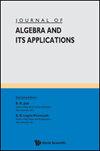非完美零能李代数上的自不变度量
IF 0.6
3区 数学
Q3 MATHEMATICS
引用次数: 0
摘要
我们在之前的工作中证明了维度不超过 10 的所有实无蕴含有自不变度量的李代数都是美好的,即它们承认劳雷特等人意义上的美好基础。在本文中,我们通过构造明确的例子来证明,在维数大于 10 和零阶数大于 2 的情况下,都存在容纳自不变度量的非漂亮的不可还原零钾列布尔。在此过程中,我们引入了一种构造具有自不变度量的列布尔的方法,称为单扩展,与著名的双扩展过程并行。本文章由计算机程序翻译,如有差异,请以英文原文为准。
Ad-invariant metrics on nonnice nilpotent Lie algebras
We proved in previous work that all real nilpotent Lie algebras of dimension up to carrying an ad-invariant metric are nice, i.e. they admit a nice basis in the sense of Lauret et al. In this paper, we show by constructing explicit examples that nonnice irreducible nilpotent Lie algebras admitting an ad-invariant metric exist for every dimension greater than and every nilpotency step greater than . In the way of doing so, we introduce a method to construct Lie algebras with ad-invariant metrics called the single extension, as a parallel to the well-known double extension procedure.
求助全文
通过发布文献求助,成功后即可免费获取论文全文。
去求助
来源期刊
CiteScore
1.50
自引率
12.50%
发文量
226
审稿时长
4-8 weeks
期刊介绍:
The Journal of Algebra and Its Applications will publish papers both on theoretical and on applied aspects of Algebra. There is special interest in papers that point out innovative links between areas of Algebra and fields of application. As the field of Algebra continues to experience tremendous growth and diversification, we intend to provide the mathematical community with a central source for information on both the theoretical and the applied aspects of the discipline. While the journal will be primarily devoted to the publication of original research, extraordinary expository articles that encourage communication between algebraists and experts on areas of application as well as those presenting the state of the art on a given algebraic sub-discipline will be considered.

 求助内容:
求助内容: 应助结果提醒方式:
应助结果提醒方式:


